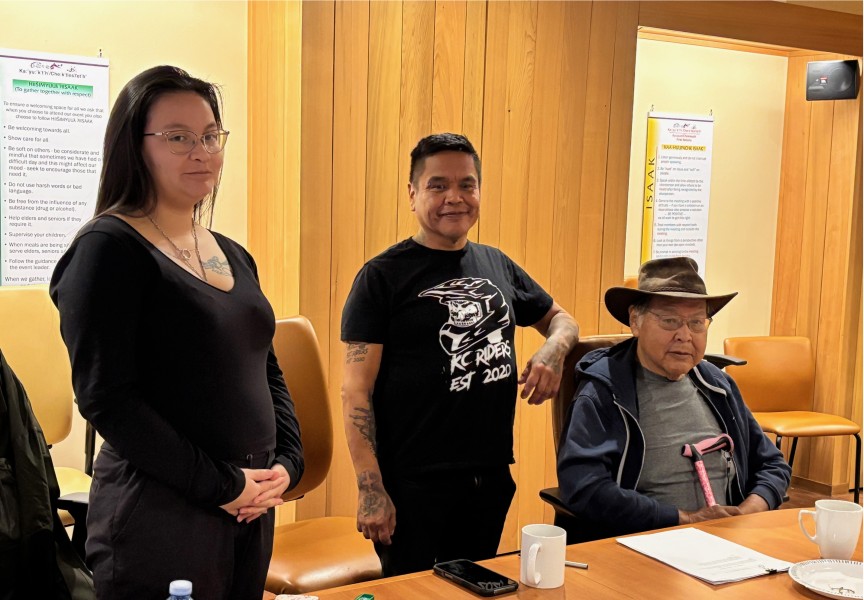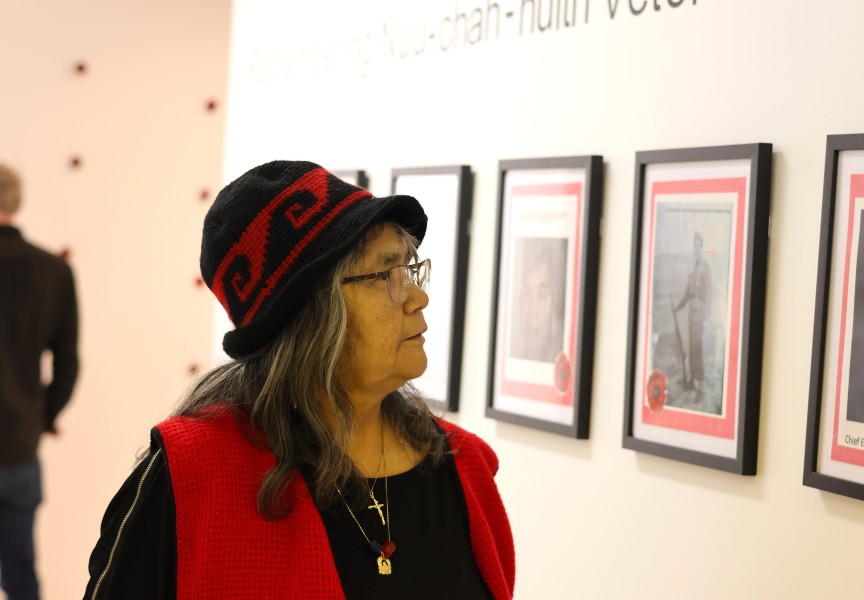The B.C. government is looking into ways to fund improving the rugged 80-kilometre stretch of road between Port Alberni and Bamfield, according to those who sat in on a meeting with provincial ministers Wednesday.
During the session participants discussed possible funding partnerships to upgrade the road. The option the province is currently looking at is to chip seal the road for an estimated cost of $50-75 million, said Scott Fraser, minister of Indigenous Relations and Reconciliation and the MLA for Mid-Island Pacific Rim. An alternative to a more expensive full paving, chip sealing is the process of solidifying a road by applying a combination of asphalt and a fine aggregate of gravel and sand.
Fraser said the options discussed included a funding partnership between the Huu-ay-aht First Nations, the province and the federal government. The province would likely cover the majority of the cost, but B.C.’s Minister of Transportation Claire Trevena, who was also present at the meeting, is working to see if funds can be found in Ottawa as well.
“If we can put together the right partners here, it starts to look interesting,” said Fraser, noting that the province currently spends at least $400,000 annually to maintain the road. “We’ve formed a committee to keep talking and explore options, that’s a big step in the right direction.”
During the session Huu-ay-aht Chief Councillor Robert Dennis Sr. advocated for an upgrade strong enough to support the larger vehicles that regularly use the road.
“We want something that enables highway trucks to be on the road,” he said. “We need the right infrastructure so that we can have a sound economy.”
“A large part of the money is for improvement of the road base itself,” said Keith Wyton after attending the meeting, who is the Alberni-Clayoquot Regional District’s area director for Bamfield. “You can’t put chip seal on a mushy road bed.”
Wyton has seen a desire to improve the road since he moved to the area in 1979.
“I don’t know if we’ve ever been this close to getting the government’s ear before,” he said. “We didn’t get a concrete commitment for specific dollars, but they said they’re very committed to find a way to make this project possible. We’re trying to get them to factor it into their budget process.”
The road currently has mixed ownership between the province and forestry companies operating in the area. This mismatch poses an initial challenge in finding funding for the chip seal upgrade, said Fraser.
“It makes it much more difficult for it to fit into somebody’s box for funding,” he said. “If everyone wants to play ball, there might be a way to find a single entity that can be held up as the one being responsible for the road, and that might make it easier to achieve funding.”
Regardless of who owns what stretch of the road, it continues to present a hazardous route for those who live in Anacla and Bamfield, which have respective populations of approximately 100 and 200 residents. These residents regularly rely on the land passage to Port Alberni for supplies and medical services.
“I live there and it would be really good to know that you can travel Port Alberni and Bamfield safely,” said Dennis. “When you do that road now, you’re risking your life, you don’t know what the other people are doing.”
“It’s not up to public safety standards,” added Fraser. “It’s hours now for taking an emergency vehicle out for service in Port Alberni.”
Wyton noted that traffic counts commissioned by the province show a 15 per cent annual increase in 2017 over the previous 12 months.
“Last year was a significant increase also,” he said. “We’re having annual increases in traffic flow. There’s always a risk on that road, we’ve had a lot of accident over the years.”
Volume usually grows in the summer, when tourists join the industrial traffic to head for the Pachena Bay campground, the West Coast Trail or other attractions like tours of the Huu-ay-aht’s historic Kiix=in village site. Over 4,000 students also venture to the area for the Bamfield Marine Sciences Centre each year.
Despite the relatively small population in the area, Dennis believes it’s time that the current NDP government responded to the support Vancouver Island’s First Nations voters have shown the party in the past.
“It’s time that the province and Canada began to support developing a strong economy in the Nuu-chah-nulth area. We have visitors that just love coming to First Nations tourism,” he said. “Rather than having an excuse for not doing it, the government should say this just makes sense, let’s do it. Look what happened to Tofino when they paved the road. Do you think Tofino would be what it is today if it was still a gravel road to Tofino? Not likely.”







